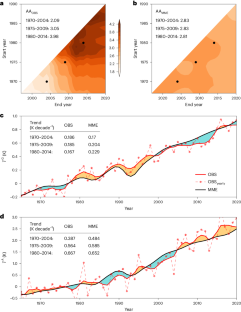2024-06-19 アリゾナ大学
<関連情報>
- https://news.arizona.edu/news/when-drought-researchers-map-which-parts-amazon-are-most-vulnerable-climate-change
- https://www.nature.com/articles/s41586-024-07568-w
アマゾン森林の生物地理学は干ばつに対する回復力と脆弱性を予測する Amazon forest biogeography predicts resilience and vulnerability to drought
Shuli Chen,Scott C. Stark,Antonio Donato Nobre,Luz Adriana Cuartas,Diogo de Jesus Amore,Natalia Restrepo-Coupe,Marielle N. Smith,Rutuja Chitra-Tarak,Hongseok Ko,Bruce W. Nelson & Scott R. Saleska
Nature Published:19 June 2024
DOI:https://doi.org/10.1038/s41586-024-07568-w

Abstract
Amazonia contains the most extensive tropical forests on Earth, but Amazon carbon sinks of atmospheric CO2 are declining, as deforestation and climate-change-associated droughts1,2,3,4 threaten to push these forests past a tipping point towards collapse5,6,7,8. Forests exhibit complex drought responses, indicating both resilience (photosynthetic greening) and vulnerability (browning and tree mortality), that are difficult to explain by climate variation alone9,10,11,12,13,14,15,16,17. Here we combine remotely sensed photosynthetic indices with ground-measured tree demography to identify mechanisms underlying drought resilience/vulnerability in different intact forest ecotopes18,19 (defined by water-table depth, soil fertility and texture, and vegetation characteristics). In higher-fertility southern Amazonia, drought response was structured by water-table depth, with resilient greening in shallow-water-table forests (where greater water availability heightened response to excess sunlight), contrasting with vulnerability (browning and excess tree mortality) over deeper water tables. Notably, the resilience of shallow-water-table forest weakened as drought lengthened. By contrast, lower-fertility northern Amazonia, with slower-growing but hardier trees (or, alternatively, tall forests, with deep-rooted water access), supported more-drought-resilient forests independent of water-table depth. This functional biogeography of drought response provides a framework for conservation decisions and improved predictions of heterogeneous forest responses to future climate changes, warning that Amazonia’s most productive forests are also at greatest risk, and that longer/more frequent droughts are undermining multiple ecohydrological strategies and capacities for Amazon forest resilience.



